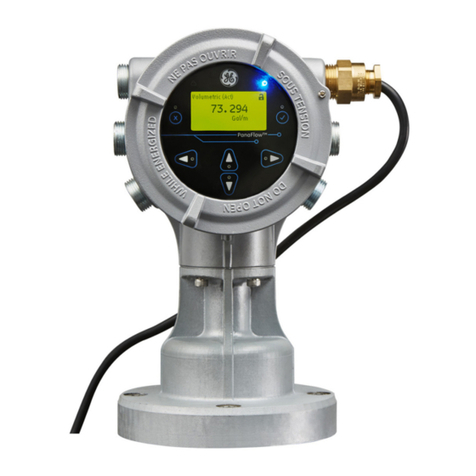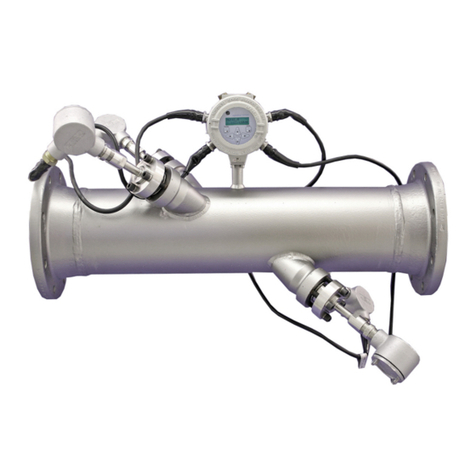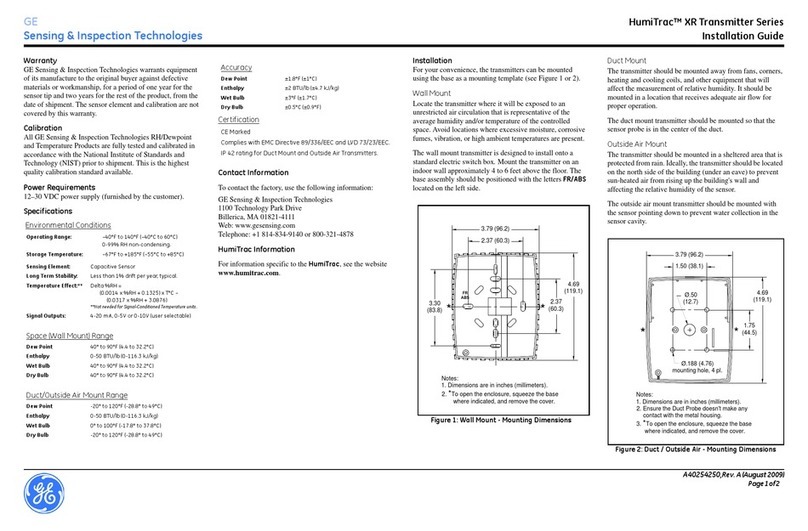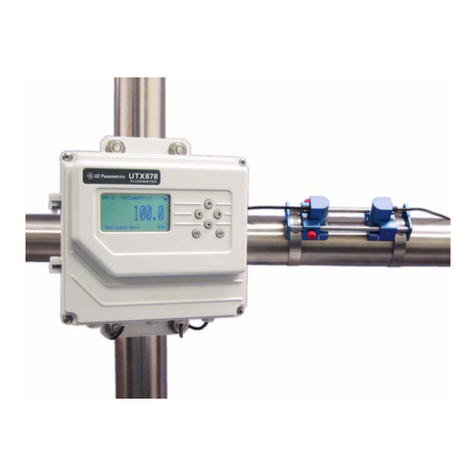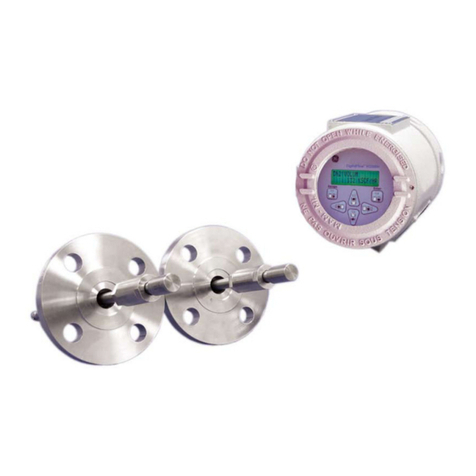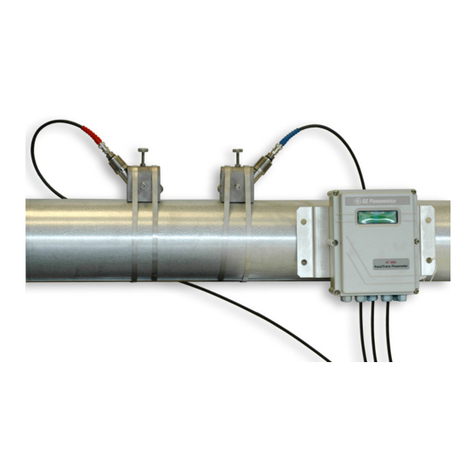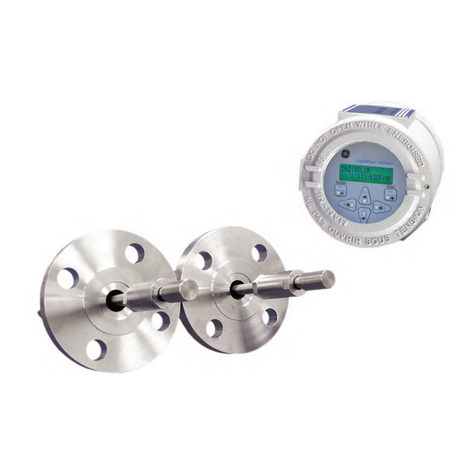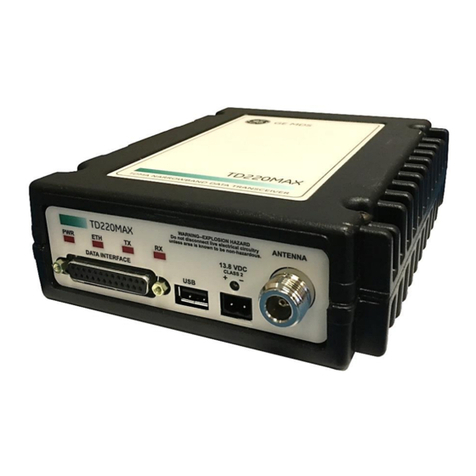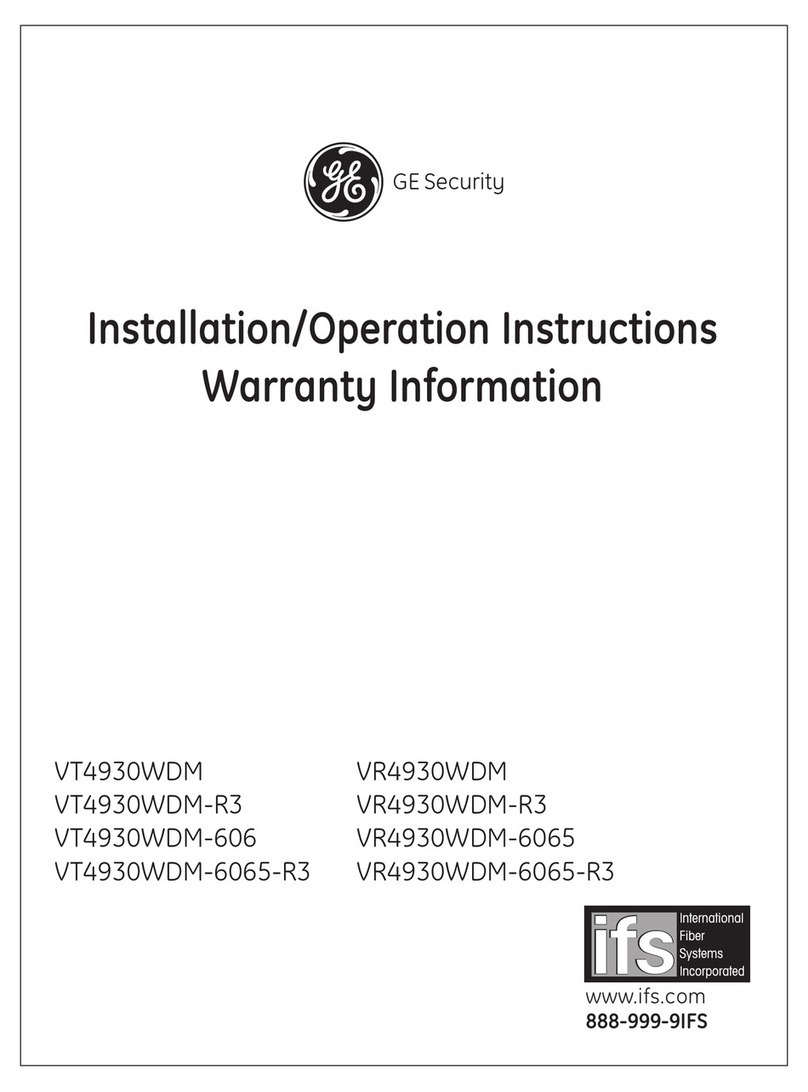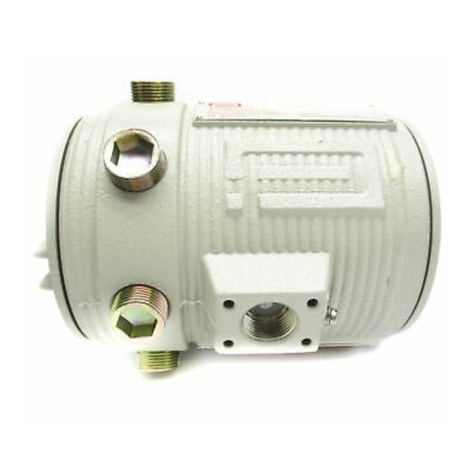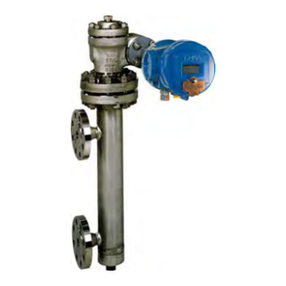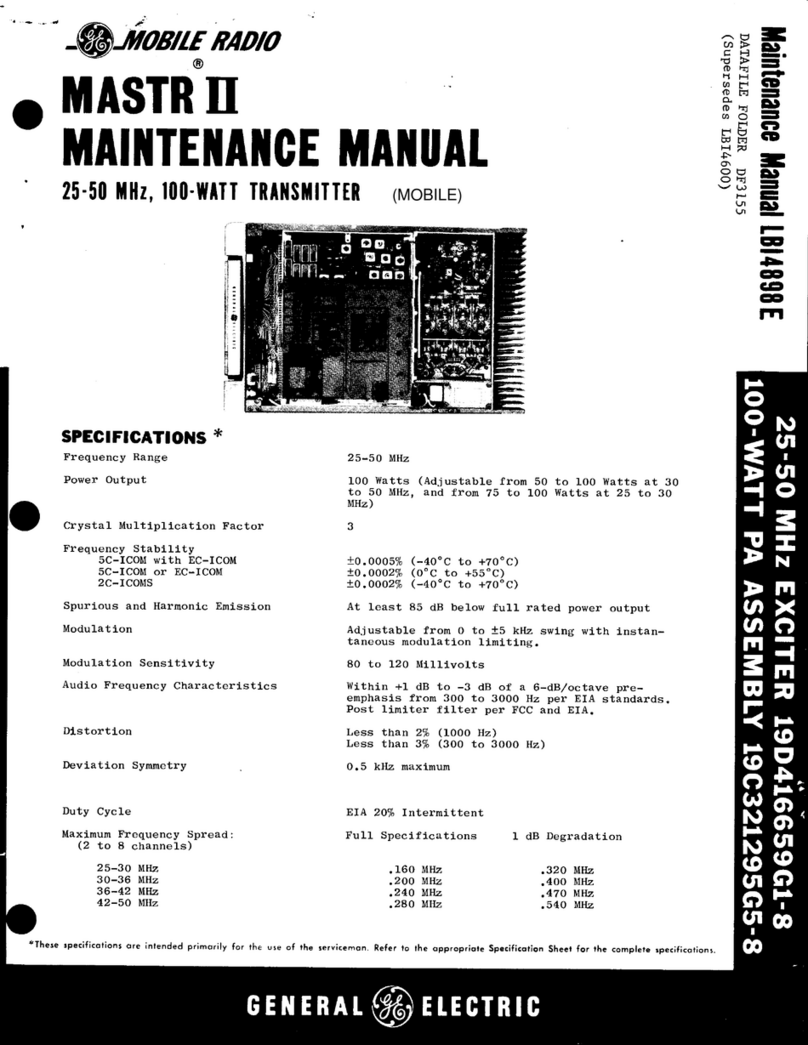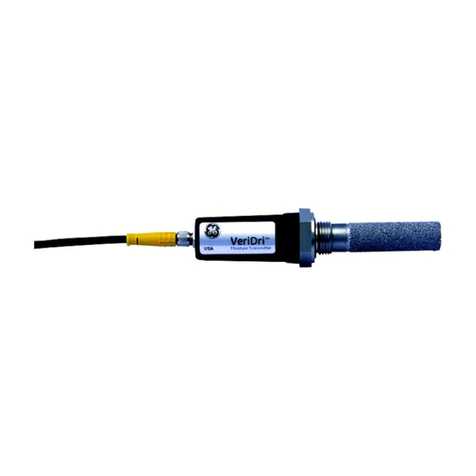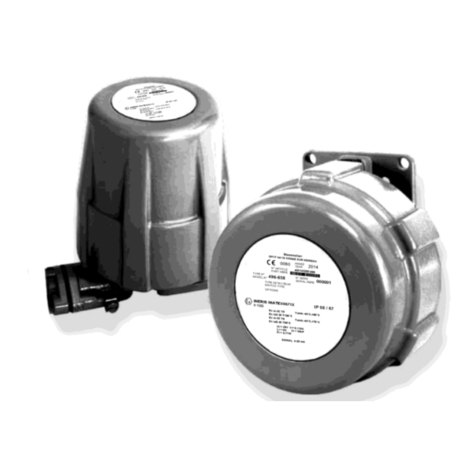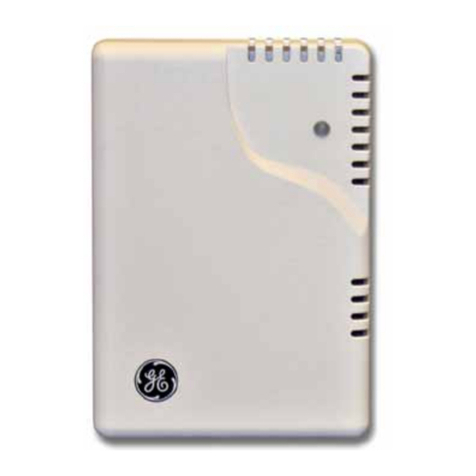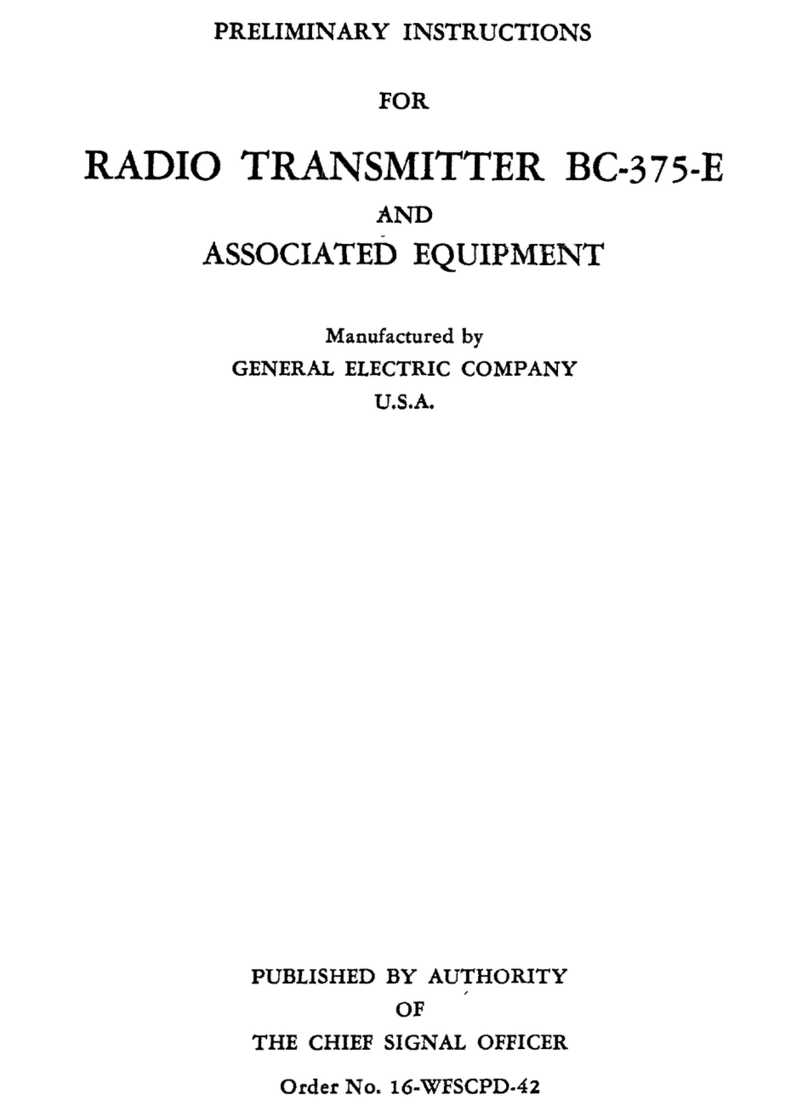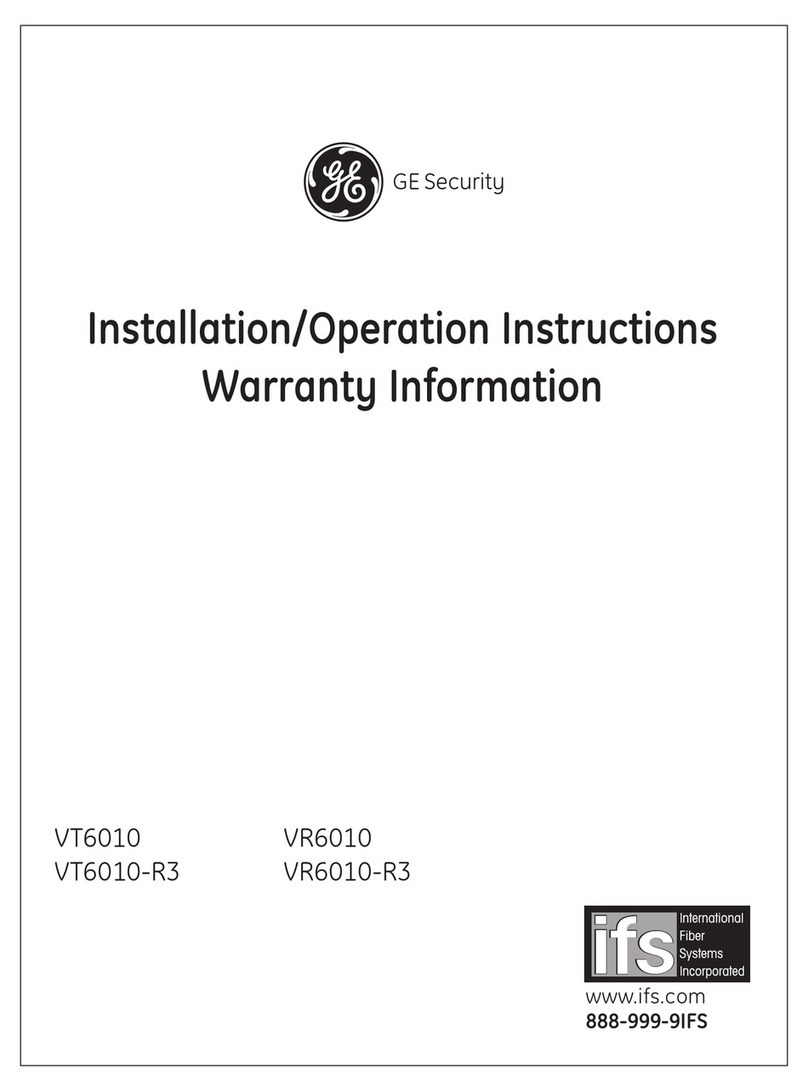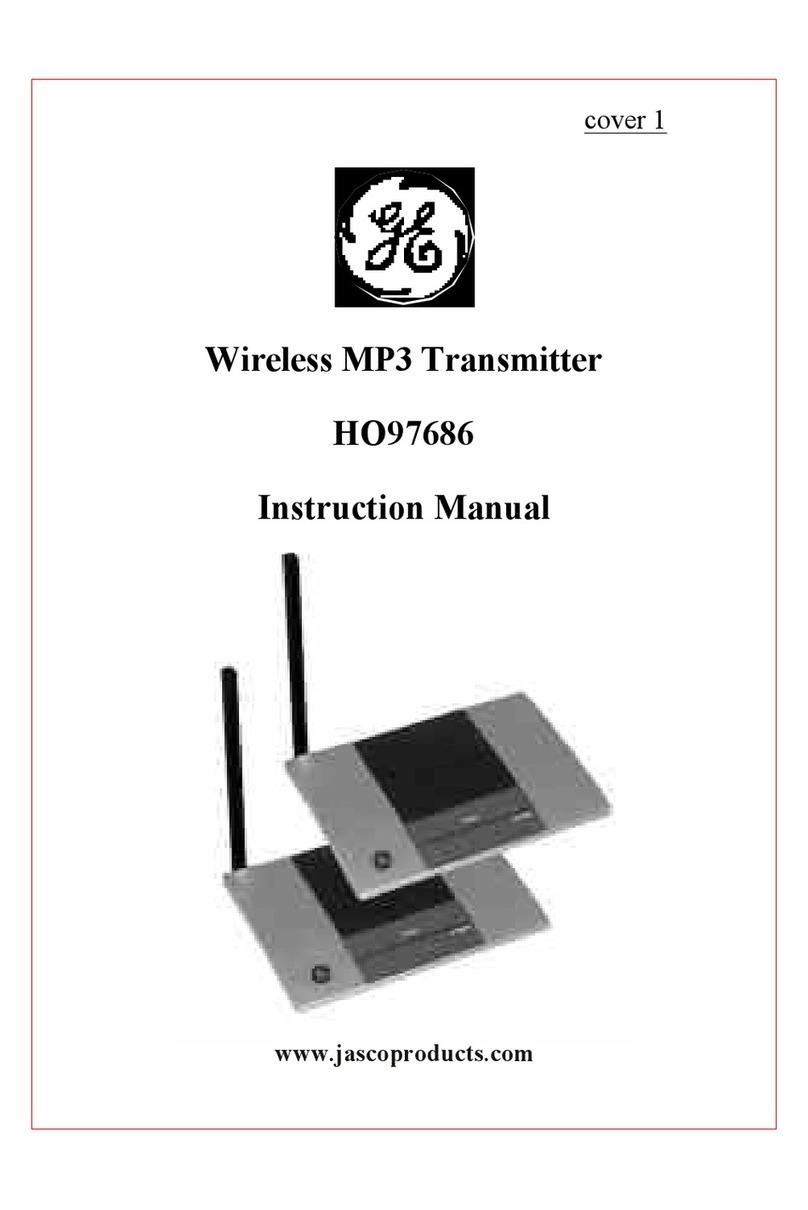
modulators by setting R16 appreciably off-center.
Adjust L6 for maximum vertical deflection at any
convenient sweep speed. This deflection may be
small at first since other circuits are not yet tuned.
Adjust L3 for further increase of deflection (maximize),
and then finally tune L, for maximum output. As
this tuning is done it may be necessary to reduce the
modulator unbalance to keep from overloading the
output stage. Check the tuning again on L5, L3, and
L4, in that order. Next remove all audio input by
turning R1 to zero, and, by successive alternate
adjustments of R16 and 1247, balance the modulators
for zero output as seen on the oscilloscope. It will be
noted that as the correct points are reached the mini-
mum point becomes successively sharper on each
control.
Next apply some 1225 CPS audio tone to the ex-
citer by advancing R1. Undoubtedly some RF en-
velope will be seen. Adjust L2 (the RF phase control)
in such a direction as to reduce the "modulation"
appearing on the output. Remove the tone, check
modulator balance (R16 and R17), and repeat the
adjustment of L2. The crystal (if used) may stop
oscillation during this operation due to interaction
between L2 and L1 tuning. If so, back out the slug on
L1 until stable crystal operation is obtained. With
the 1225 CPS audio signal still applied continue to
adjust L2 for minimum "modulation" or ripple on
the envelope, checking modulator balance periodi-
cally. When a minimum point is reached, adjust R12 to
still further reduce this ripple, then adjust L2 for more
reduction, etc. until a substantially ripple-free dis-
play is seen.
With L2 tuned it is now time to check the r -f volt-
ages applied to the modulators. Temporarily remove
the audio tone and connect the vertical deflection
plate of the oscilloscope to the arm of R16. Always
keep the common connection of the oscilloscope
grounded to chassis. Note the deflection and then
check the voltage on the arm of R17 in a similar
manner. If this is appreciably lower than the first
voltage (on the arm of R16) more coupling capacity
(C6) is necessary between L1 and L2.
Usually very little capacity is required, and this
can be provided conveniently by making a condenser
of two pieces of insulated wire twisted together for
half an inch or so. Adjust the amount of capacity by
clipping off a little bit at a time to approximately
equalize the RF signals appearing on the arms of
R16 and R17. (Note: check both voltages after each
adjustment of capacity, since both voltages will
change.) Connect the oscilloscope to read r-f output
from L6 as before, and then check modulator balance.
Apply the 1225 CPS tone and make whatever slight
adjustment is necessary in L2 tuning to obtain the
ripple-free display obtained before the coupling ca-
pacitor (if necessary) was installed. Remove the audio
tone and check modulator balance (Ri6 and R1 ).
This completes the adjustment of SSB, Jr. A dummy
load may now be connected, or the output used to
drive a high power linear amplifier.
Note that when changing frequency, Ll, L2, L3, L4
and L5 should be readjusted, since these circuits
constitute the tuning adjustments of the rig. The
principal effect of mistuning L3, L4, and L; will be
lower output or efficiency. The principal effect of mis-
tuning L2 will be degraded sideband suppression.
It is quite important, therefore, to adjust L2 very
carefully. It may be noticed that when large audio
signals are applied, the envelope develops some ripple.
There are two possible causes for this action. The
first is carrier unbalance (carrier shift), and the other
is harmonic distortion in the audio circuits. (It is
assumed that a pure sine wave of 1225 CPS is used
_- o
Z.® ;0. .
4 .
..i'r ..
?..
'11._
r r
.. ..-
Fig 11. Under chassis view of the SSB Jr.
as the input signal.) One may isolate these two
effects by setting carrier balance at high-level audio
operation (where these effects generally are most
pronounced) to reduce the "ripple." With the carrier
ripple (which is easily identified when the carrier
balance controls R16 and R17 are moved) balanced
out, adjust L2 slightly (in conjunction with RIO for
minimum envelope ripple. The remaining ripple
should be less than 5% of the display and is most
probably caused by audio distortion, either in the
audio source or in the audio system of the transmitter.
In observing ripple, the oscilloscope should be syn-
chronized from the 1225 CPS audio signal at a fre-
quency of about 122.5 CPS to show ten cycles or so
of carrier ripple. Unwanted sideband ripple will show
twice as many peaks, and so will second harmonic
audio distortion. Third harmonic audio distortion
will show three times as many peaks, etc. Of course,
all these distortions (and maladjustments) may occur
simultaneously, so a little care and thought is ad-
vised. In the sample SSB Jrs. tested, third harmonic
audio distortion is the principal component, and is
easily identified at high levels.
When feeding a load the total input current will
rise to about 80 MA at full level with a single tone
input. With speech input the current will rise syl-
labically from a resting value of about 60 MA to
around 70 MA, depending on the waveform. Always
use an oscilloscope to determine maximum operating
levels. Overload will cause degradation of the side-
band suppression, and so is to be avoided. Sideband
cancellation adjustments performed at about half
peak level are probably the most reliable ones. Carrier
balance is best made with little or no audio input.
Peak level is the audio signal level which causes
flattening of the peaks due to amplifier overload. A
higher input level can be used when working into a
load, but the overload condition should be avoided
while making adjustments and later, too, when operat-
ing the rig.
The sideband selector switch is used to control
which sideband (upper or lower) is generated. Find
out which switch position corresponds to upper
sideband by tuning the exciter output signal on a
receiver with its BFO supplying carrier. Conduct a
talk test and tune the receiver for normal speech
output. Then tune the receiver to a slightly lower
frequency. If the voice pitch rises, the upper side -
band is being generated. Identify switch positions
accordingly.
It takes about 15 minutes from a "cold" start to
make all the adjustments described here after a little
experience is gained. Do not be frightened away from
single-sideband because of a lengthy description of
the adjustment procedure, since the adjustments are
simple to do, and you will find that the description is
actually very detailed and complete. Another reason
for not being frightened away from single-sideband
is that extremely modest equipment affords the most
reliable 'phone communication yet developed.
9
